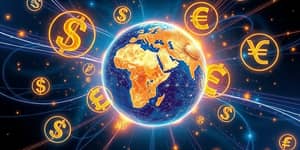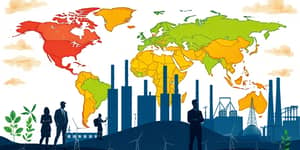
In an era defined by rapid shifts and uncharted challenges, understanding where the world economy is headed can feel overwhelming. Yet, with clarity, strategy, and collaboration, businesses, policymakers, and individuals can chart a path toward resilience and growth. This article delves into the latest projections, highlights emerging risks, and offers practical guidance to help you navigate a complex global landscape.
After recovering from the shock of the pandemic and navigating lingering supply-chain disruptions, the global economy is projected to expand by 2.9% in 2025 and 2.8% in 2026, down from 3.3% in 2024. In a weaker scenario, growth could slow to 2.3%, marking the feeblest pace since the 2008 financial crisis (excluding the initial COVID-19 downturn).
The pronounced slowdown across major economies is most evident in the United States, Canada, Mexico, and China. Advanced economies face smaller declines, while emerging regions display varied momentum. Below is a snapshot of key forecasts for 2025 and 2026:
Beyond these headline figures, regional trends vary: East Asia & Pacific may grow by 4.5% in 2025; Europe & Central Asia around 2.3%; Latin America & the Caribbean close to 2.7%; and the Middle East & North Africa near 5.8%. These divergences create both risks and opportunities for cross-border investment and trade.
Inflation has proven stickier than anticipated. OECD-wide inflation is forecast at 4.2% in 2025, easing to 3.2% in 2026, driven by persistent shocks and second-round inflation effects persist in wages and services. In the United States, inflation may deviate from global disinflation trends, posing challenges for households and central bankers alike.
Commodity prices are also in flux. Fuel costs could decline by 7.9% in 2025—with oil down 15.5% and coal down 15.8%—yet natural gas prices might surge by 22.8% due to supply disruptions. Nonfuel commodities, including food and beverages, may rise by 4.4%, adding pressure to emerging economies.
Central banks are responding cautiously. The Federal Reserve is expected to keep rates near 4% through March 2026, while the European Central Bank may cut rates gradually. Navigating these divergent central bank rate paths requires agile decision-making from investors and businesses.
Governments are leaning into fiscal support to cushion slower growth. In major economies, expansive fiscal spending commitments aim to fund infrastructure, green transitions, and social programs, but deficits are set to rise sharply. Germany’s deficit may hit post-reunification highs, and U.S. borrowing needs will swell due to higher interest costs.
However, structural challenges loom. Investment remains subdued after the Global Financial Crisis and COVID-19, with capital accumulation and public sector projects falling short of potential. Housing, transportation, and digital infrastructure gaps undermine productivity gains and long-term growth prospects.
The forecast carries significant risks that could derail even the most optimistic projections. Key headwinds include:
To manage these threats, leading institutions employ advanced econometric modeling, scenario analysis, and real-time risk scoring. Monitoring over 500 indicators across more than 200 countries helps businesses and governments anticipate turning points and adjust strategies swiftly.
Amid uncertainty, proactive steps can turn challenges into competitive advantages. Consider these practical actions:
The world economy in 2025–2026 promises a tapestry of challenges and opportunities. By understanding the latest forecasts, anticipating risks, and implementing resilient growth strategies, stakeholders can not only weather turbulence but also drive sustainable progress. In a complex global landscape, informed action, collaboration, and creativity will define the leaders of tomorrow.
References













